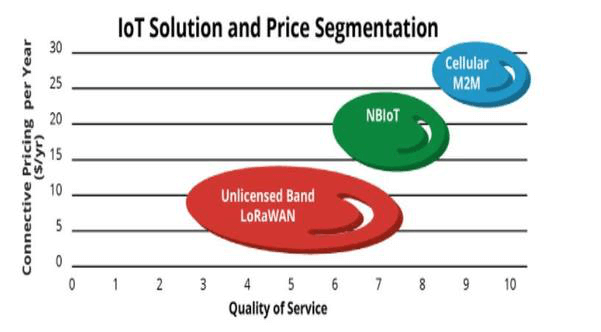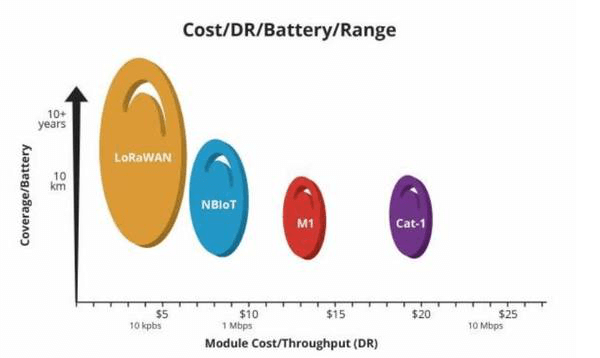
Email:marketing@richerlink.com
Tel:+86-755-86610859
Add:1001, Floor 10, Building 3, Chongwen Park, Nanshan Zhiyuan,Liuxian Avenue, Taoyuan Street, Nanshan District, Shenzhen,China
The wireless technologies of the Internet of Things are mainly divided into two categories:
(1) One type is short-distance communication technology such as Zigbee, Wifi, Bluetooth, Z-wave;
(2) The other type is LPWAN, which is a low-power wide-area network. LPWAN can be divided into two categories: LoRa, SigFox, etc., which work on unlicensed spectrum, and 3GPP, which work in licensed spectrum. 2/3/4G cellular communication technologies such as EC-GSM, LTE Cat-m, NB-IoT, etc.
1. Frequency bands, quality of service and costs. LoRa works in unlicensed frequency bands below 1Ghz, and does not require additional charges when applied. NB-IoT and cellular communication using licensed bands below 1 GHz are authorized and chargeable.

2. Battery life. There are two important factors to consider regarding battery life, the current consumption of the node and the protocol content. LoRa is an asynchronous ALOHA-based protocol, which means that nodes can sleep for a long or short time depending on the specific application scenarios. Nodes such as cellular synchronization protocols must be networked periodically, which consumes extra battery power.

3. Network coverage and deployment schedule. The NB-IoT standard was announced in 2016. In addition to network deployment, the corresponding commercialization and establishment of the industry chain will take longer and effort to explore. LoRa’s entire industry chain is relatively mature, and its products are in a state of “ready to go”. At the same time, many countries around the world are or have completed nationwide network deployment.
4. Equipment costs. For the terminal node, the LoRa protocol is simpler than NB-IoT, easier to develop and more suitable for microprocessor compatibility and compatibility. At the same time, low-cost, relatively mature technology LoRa modules can be found in the market, and upgraded versions will follow.
There is no uncontroversial choice in the IoT space, and each application scenario has its own unique needs and considerations. I believe that in the booming Internet of Things industry, NB-IOT and Lora will have their own broad application market.
Copyright © Richerlink Technology Co.,Ltd. 2009-2023. Copyright All Rights Reserved